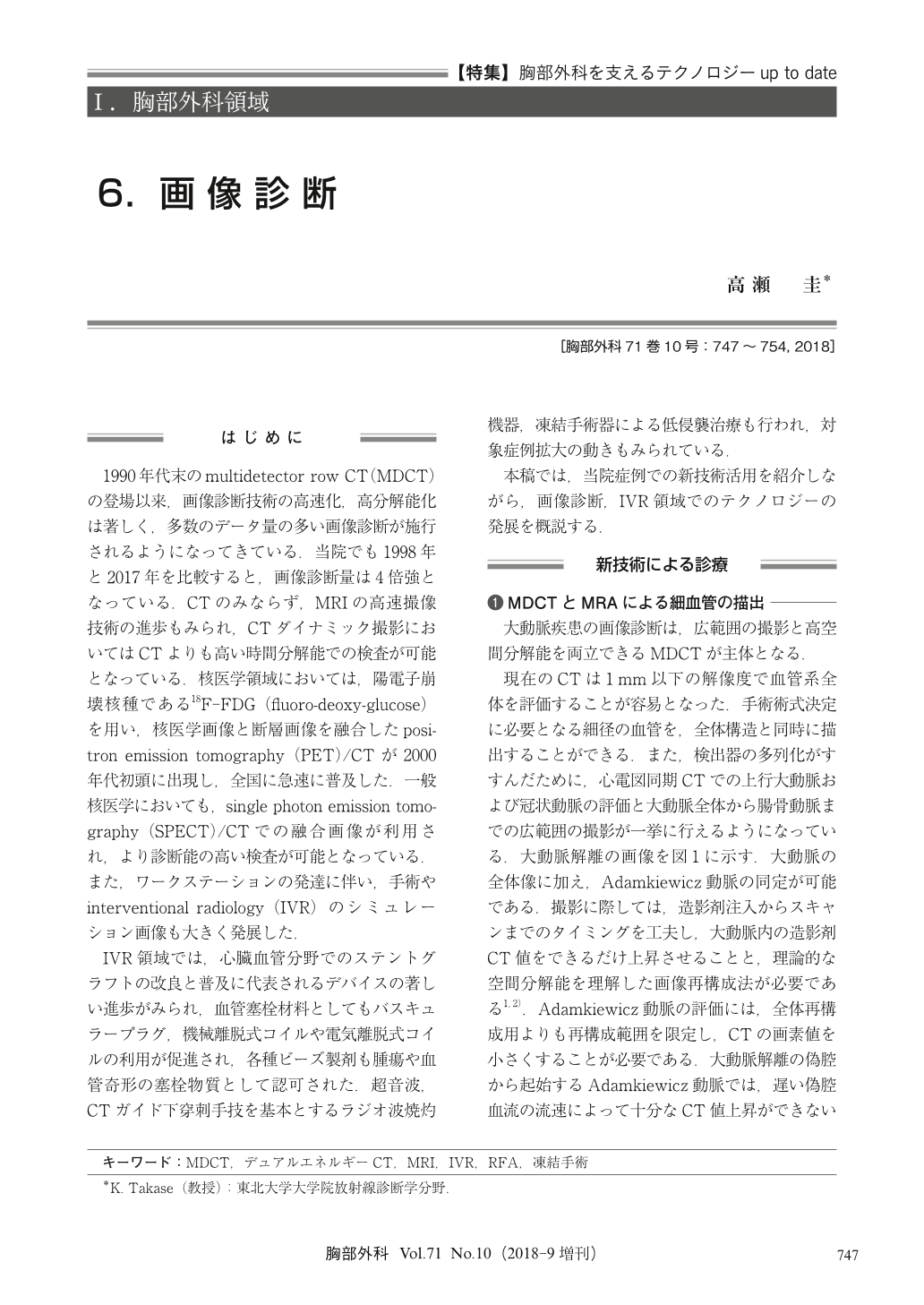Japanese
English
- 有料閲覧
- Abstract 文献概要
- 1ページ目 Look Inside
- 参考文献 Reference
1990年代末のmultidetector row CT(MDCT)の登場以来,画像診断技術の高速化,高分解能化は著しく,多数のデータ量の多い画像診断が施行されるようになってきている.当院でも1998年と2017年を比較すると,画像診断量は4倍強となっている.CTのみならず,MRIの高速撮像技術の進歩もみられ,CTダイナミック撮影においてはCTよりも高い時間分解能での検査が可能となっている.核医学領域においては,陽電子崩壊核種である18F-FDG(fluoro-deoxy-glucose)を用い,核医学画像と断層画像を融合したpositron emission tomography(PET)/CTが2000年代初頭に出現し,全国に急速に普及した.一般核医学においても,single photon emission tomo‑
Recent introduction of multidetector-row computed tomography (MDCT) with more than 64 scanners enabled high-speed scanning in wide range of the body. Electrocardiogram (ECG) gated scanning and 4-dimensional imaging provides precise evaluation of cardiac and vascular diseases. Fine vascular structures such as the artery of Adamkiewicz can be visualized due to improved spatial and temporal resolution of CT and magnetic resonance imaging (MRI).
Interventional radiology also plays important roles in combination with surgical treatment. Complicated vascular embolization before and after surgery can be performed more safely using current microcatheters with increased flexibility and trackability and various kinds of detachable coils. Chylothorax also come to be treated by interventional radiology. Transnodal lymphography can visualize lymphatic leak followed by thoracic duct embolization. Radiofrequency ablation and cryoablation for thoracic tumors, which is usually performed by real-time CT fluoroscopy, is expected to be officially approved.
Newly developed techniques will further improve thoracic imaging diagnosis. Dual energy CT technology and new reconstruction technique can decrease the radiation dose without deteriorating image quality. Iodine imaging by dual energy CT can visualize vascular perfusion. Four-dimensional flow image of MRI can image vascular flow-dynamics without using contrast material.

© Nankodo Co., Ltd., 2018


